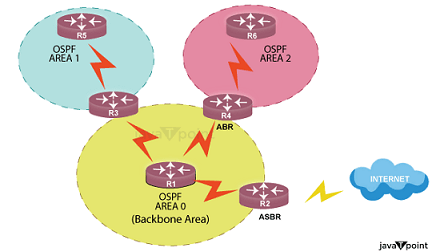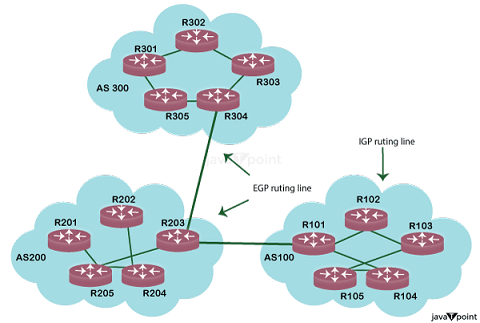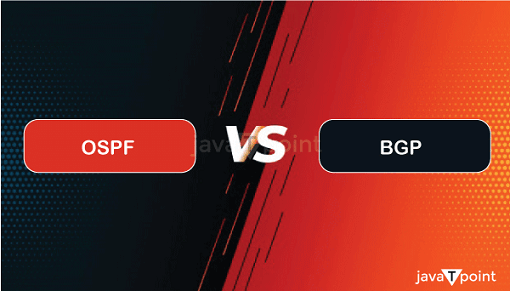Difference between OSPF and BGPOSPF and BGP protocols are two of the most widely utilized routing protocols for routing traffic in very large networks. The most significant distinction between these protocols is that the OSPF protocol is an intradomain routing protocol. , the BGP protocol is an interdomain routing protocol. The OSPF protocol employs link state routing. In contrast, the BGP protocol employs path vector routing. In this article, you will learn about the difference between OSPF and BGP Protocols. But before discussing the differences, you must know about OSPF and BGP Protocols with their advantages and disadvantages. What is OSPF Protocol?OSPF protocol stands for "Open Shortest Path First". It is a type of internal gateway protocol (IGP). The IGP working group was founded to create an IGP that was based on the Shortest Path First (SPF) algorithm utilized in Internet Protocol networks. This protocol utilizes link state routing. It was mainly developed in response to resolving the RIP protocol's difficulties in serving big, diverse internet works. This protocol is a link-state routing protocol that may work within a hierarchy. The autonomous system is the highest level and largest entity in the hierarchy. It calls the routers in the hierarchical area to transfer the link-state ads. 
OSPF protocol supports various authentication mechanisms, and each router-to-router exchange should be authenticated. Authentication is utilized to make sure that only approved routers may transmit routing information. Separate routes to only one destination are computed relies on HOP count and high throughput for every service type. Load balancing is utilized to distribute traffic equitably when there are many low-cost paths to the destination. In the OSPF protocol, networks are organized into self-contained Areas. A region's topology is concealed from the remaining autonomous systems and neighboring territories. Due to the information masking, routing traffic is minimized. OSPF protocol distinguishes between data acquired within the network and data gathered from an outside router by utilizing various message formats. Advantages and Disadvantages of OSPF ProtocolThere are various advantages and disadvantages of the OSPF Protocol. Some main advantages and disadvantages of the OSPF Protocol are as follows: Advantages
Disadvantages
What is BGP Protocol?BGP is an abbreviation for "Border Gateway Protocol". It is the form of the mesh topology or design. It is an External Gateway Protocol (EGP) that identifies the optimum path for data transmission among Autonomous Systems (AS). It is accomplished by exchanging routing data in the type of BGP messages, which include data about the network architecture, the availability of multiple routes, and the policies utilized to find the optimum path. 
Every route includes extra data that comes in the type of path attributes. Path characteristics are utilized in routing policies to impact how the router routes traffic. Advantages and Disadvantages of BGP ProtocolThere are various advantages and disadvantages of the BGP Protocol. Some main advantages and disadvantages of the BGP Protocol are as follows: Advantages
Disadvantages
Key differences between OSPF and BGP Protocol
There are various key differences between OSPF and BGP Protocol. Some of the key differences between OSPF and BGP Protocol are as follows:
Head-to-head comparison between OSPF and BGP ProtocolHere, you will learn the head-to-head comparisons between OSPF and BGP Protocol. The main differences between OSPF and BGP Protocol are as follows:
ConclusionIn conclusion, the BGP and OSPF protocols are two distinct routing protocols that are mainly utilized in computer networks for a variety of functions. The OSPF is an inside gateway routing protocol, whereas BGP is an external gateway routing protocol. The OSPF protocol relies on link-state routing, in which every router or gateway communicates the status of its neighbor router to every other router in the area. In contrast, the BGP protocol is relies on path vector routing, which implies that a router has a list of networks that may be reached and the path to each of them.
Next TopicDifference Between
|
 For Videos Join Our Youtube Channel: Join Now
For Videos Join Our Youtube Channel: Join Now
Feedback
- Send your Feedback to [email protected]
Help Others, Please Share










